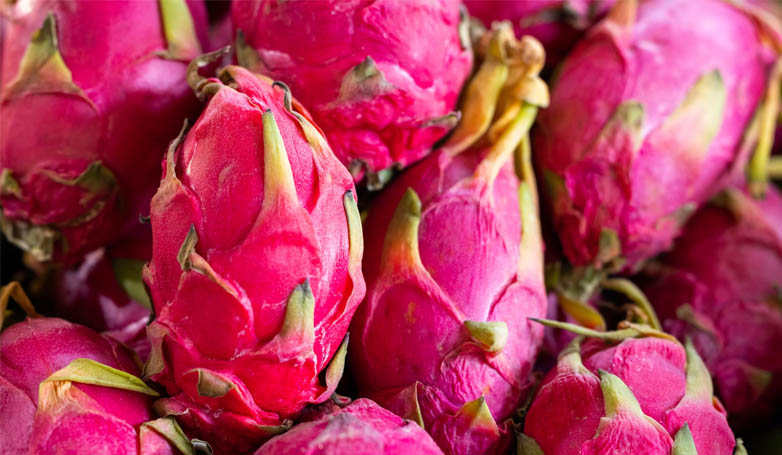Unleashing the Tropical Treasure: The Healthy Benefits of Dragon Fruit
You’ve probably seen it sitting there in the produce aisle, flashy and vibrant with its pink, spiky armor, looking like it was plucked straight from a mystical cactus. Yes, we’re talking about the illustrious dragon fruit. This tropical delight not only wins the award for the coolest-looking fruit on the block, but it’s also a nutritional powerhouse with benefits that are just as impressive as its appearance. Before you take another pass by this fantastical fruit, let’s dive into the top healthy benefits of dragon fruit that’ll have you adding it to your shopping cart in no time!
1. Rich in Antioxidants
The healthy benefits of dragon fruit include a rich concentration of antioxidants like betacyanins and flavonoids. These compounds provide cellular protection against oxidative stress, potentially lowering the risk of chronic diseases. The array of antioxidants in dragon fruit helps neutralize harmful free radicals, bolstering overall health and wellness.
2. Rich in Fiber
Boasting remarkable fiber content, the healthy benefits of dragon fruit extend to digestive health. A single serving can provide a significant percentage of daily fiber needs, promoting regular bowel movements, preventing constipation, and contributing to a feeling of fullness, which can aid in weight management.
3. Supports Heart Health
With a profile that includes heart-healthy monounsaturated fats, dragon fruit supports cardiovascular wellness. The healthy benefits of dragon fruit are evident in its capacity to reduce harmful LDL cholesterol levels while potentially boosting HDL cholesterol, together promoting a robust and well-functioning circulatory system.
4. Boost the immune system
Enriched with vitamin C and other immune-strengthening nutrients, the healthy benefits of dragon fruit bolster the body’s defense mechanisms. Regular consumption can augment the immune response, providing a barrier against common pathogens and infections that could otherwise compromise health.
5. Iron Benefits
Dragon fruit provides a substantial iron boost, which is critical for healthy blood and vitality. The healthy benefits of dragon fruit are evident, as iron assists in oxygen transportation throughout the body, supporting metabolic processes, cognitive function, and the reduction of fatigue associated with iron deficiency.
6. Good for Skin
The vitamins and antioxidants in Dragon Fruit deliver profound skin-healthy benefits, from hydrating and nourishing to protecting against UV damage. Its vitamin C content is particularly beneficial for collagen synthesis, which keeps skin firm and aids in the repair of damaged skin cells.
7. Supports Stable Blood Sugar Levels
With its low glycemic index and fiber richness, the healthy benefits of dragon fruit may help stabilize blood sugar. Those managing diabetes or seeking to prevent blood sugar spikes can incorporate this fruit into their diet, potentially improving glucose control and maintaining energy stability.
Dragon Fruit: Your Tasty Ally in a Health-Conscious Quest!

So there you have it—the dragon fruit isn’t just a pretty face; it’s ripe with a bevy of benefits that make it worthy of your diet. Whether you’re looking to amp up your antioxidant intake, aid your digestion, or give your heart some extra love, this tropical treasure has got you covered. From bolstering your immune system to invigorating your skin and even assisting with blood sugar management, dragon fruit is the herald of health that tastes just as magical as it looks. Next time you’re in the fruit aisle, be brave and grab that dragon. Your body will thank you for it!
Healthy Benefits of Dragon Fruit FAQs
Here are the most common questions about the healthy benefits of dragon fruit.
1. What is dragon fruit?
Dragon fruit, also known as pitaya or pitahaya, is a tropical fruit that belongs to the genus Hylocereus in the cactus family. It is known for its distinctive bright pink or yellow skin and sweet, seed-speckled pulp, which can be white, pink, or red.
2. Can diabetics eat dragon fruit?
Diabetics may include dragon fruit in their diet because it can regulate blood sugar levels. However, portion control and monitoring are essential.
3. Can pregnant or breastfeeding women consume dragon fruit?
Yes, dragon fruit is considered safe for pregnant and breastfeeding women. However, it’s always best to consult a doctor before adding new foods to your diet during these periods.
4. Can you be allergic to dragon fruit?
Allergies to dragon fruit are possible but rare. People with a known sensitivity to other fruits or with a history of food allergies should be cautious when trying it for the first time.
5. How do you eat dragon fruit?
You can eat dragon fruit by slicing it in half and scooping out the flesh with a spoon. The skin is not edible. The flesh can also be cubed or sliced and added to salads, smoothies, and other dishes.












